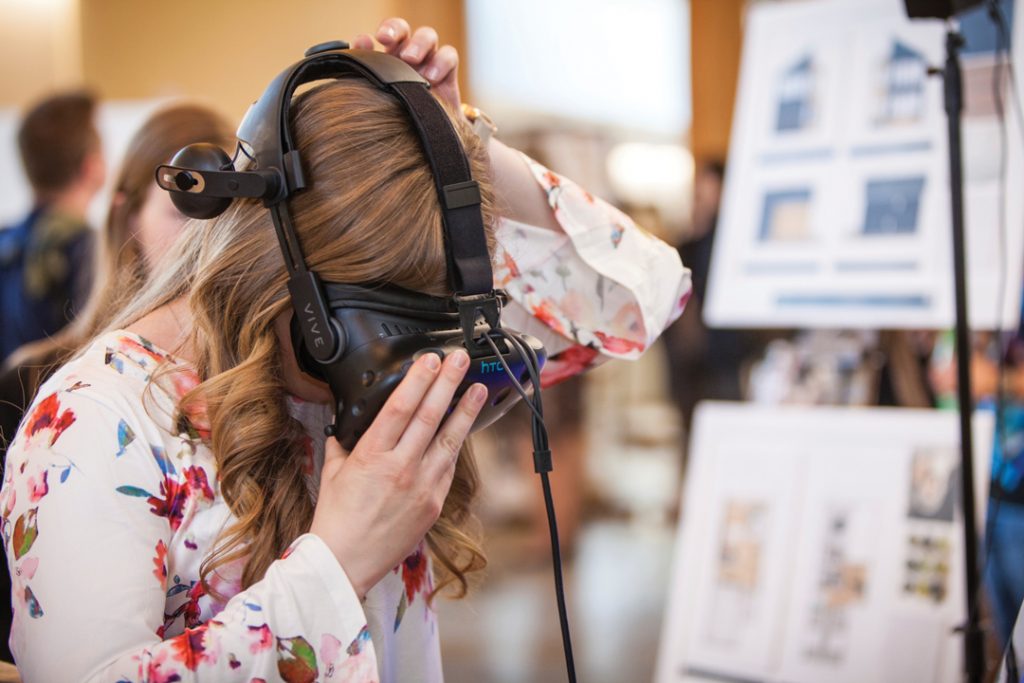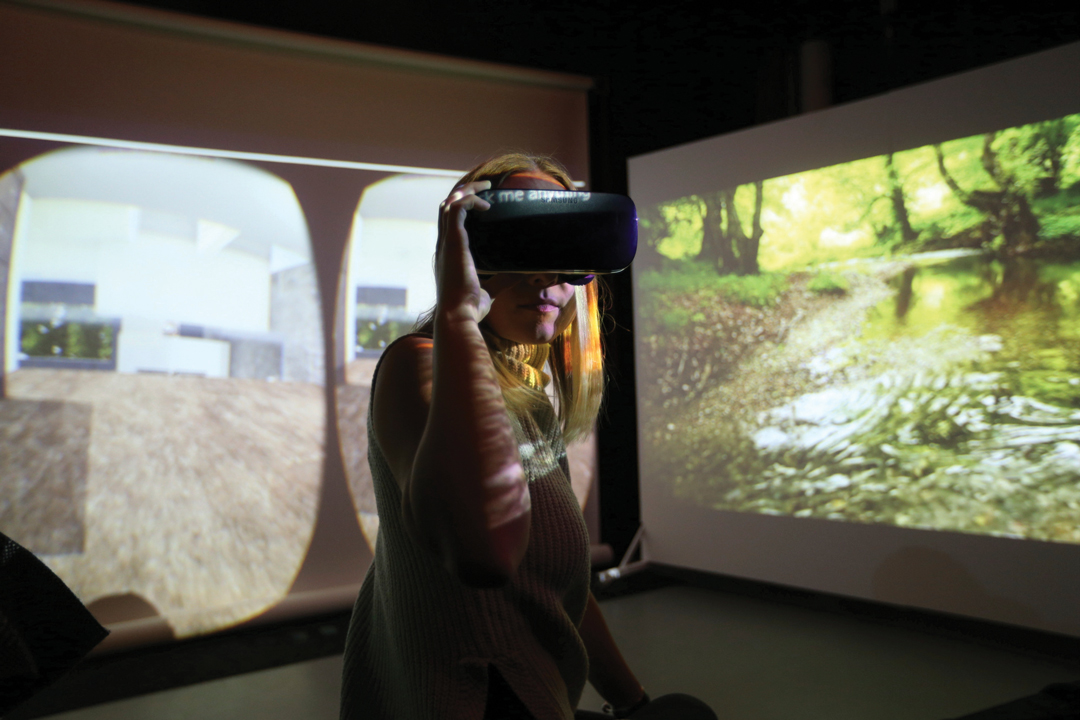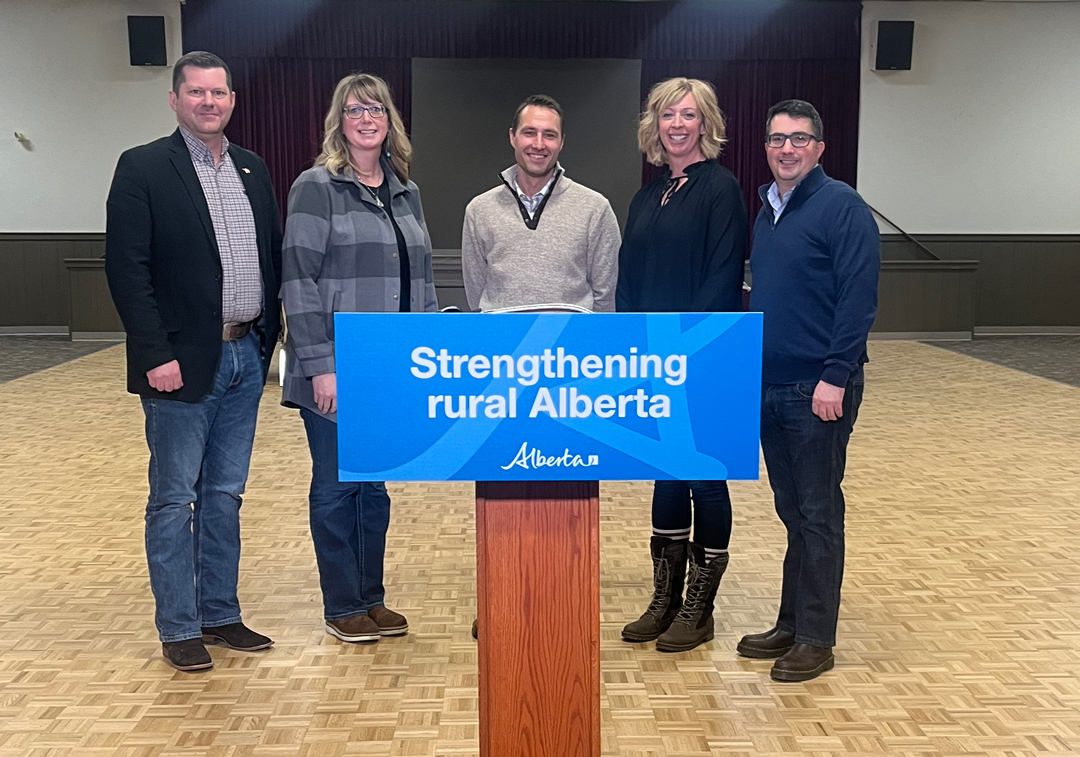AR GETS REAL
BY GEOFF GEDDES • PHOTOS COURTESY OF LETHBRIDGE COLLEGE
If you witnessed digital numerals hovering above the hills and ravines of your cropland, you might swear off beer. But with the aid of augmented reality (AR) viewing gear, this is the intoxicating potential future of precision ag.
Using AR equipment is like being inside a combination live-action movie and video game. This technology layers computer-generated enhancements atop a physical environment that allows the user to interact with the system. For farmers, that environment is the farm, and the enhancements are those hovering numbers that represent input volumes and other production data. Such systems will potentially allow farmers to better manage and apply data for bottom-line benefits.
“AR literally augments your physical world,” said Matt Wright, chief experience officer and founder of MAMMOTH XR, a Calgary company with expertise in AR and virtual reality (VR) content creation. “If you’re looking at a crop of canola using special AR glasses or another device, you can have numbers popping up in your field of view indicating that the area is a dead zone where you shouldn’t bother adding product, or that this portion of the crop needs certain treatments to thrive.”
Where AR users experience supplementary components blended with reality, in VR the user is isolated from the real world and fully immersed in the virtual one. A person can explore and interact with a three-dimensional, computer generated environment with VR, performing actions or manipulating objects as they go.
While VR has its place, the AR applications are especially relevant to farming. The potential information garnered through AR is seemingly endless: images of last year’s crop for comparison purposes, rates and locations of past applications, weed and pest identification, herbicide selection and more.
“Augmented reality comes down to reducing inputs and enhancing outputs,” said Dinen Subramaniam, technical sales manager with Winnipeg’s JCA Electronics. “Our company supports that through apps that allow the client to interact with equipment via smartphones or tablets. In feeding you data on aspects such as moisture levels, the apps can prescribe tillage levels and guide adjustment of tillage tools as you move down the field.”

WHEN LESS IS MORE
Part of input reduction is protecting the land. By accessing so much data simultaneously, AR can potentially reduce land compaction by getting farmers in the field when the numbers suggest the timing is optimal and further enhancing productivity.
JCA is also working on the means to display the data, such as computer screens that allow operators to manage tractors and tillage equipment. “One of our latest projects is a universal terminal that you can power on an iPad,” said Subramaniam. “Instead of spending $5,000 on a display, you can take the same device your child was just watching Netflix on and use it to manage your equipment.”
In addition to agronomic use, AR has potential value as a sales and marketing tool. Farmers can download the Väderstad AR app on a smart phone or tablet. Pointing these at the AR triggers in the company’s brochures turns them into interactive, multi-media presentations. While viewing the workings of the company’s machinery, farmers using the app can also receive information and insights on the benefits and functions of its various parts.
By incorporating VR in the mix, industry can reap even more rewards from this rapidly evolving technology.
ABOVE BOARD AND BEHIND THE SCENES
“VR can give the public a great understanding of the work you do,” said Kris Hodgson-Bright, chair of the School of Media and Design in the faculty of Digital Communications and Media at Lethbridge College. “Companies like McDonald’s and Cargill are already doing that, taking consumers behind the scenes in a virtual world for an exclusive look at what’s happening in the industry and where their food comes from. It can also be a way to emphasize transparency and re-assure trading partners like China that our canola is held to the highest standards.”
As a sign of the times, Lethbridge College recently received approval for an AR and VR certificate to train developers in this emerging technology. “This is one of the first programs of its kind in Canada and the first in Alberta,” said Hodgson-Bright. “It is part of our commitment to working with industry and understanding the skills required to meet their needs.”
Though outdoor applications of AR are of greatest interest to farmers, there are relevant indoor uses. “We are working with a camera that is normally employed for detecting temperature differences in electronics or seeing people at night,” said Ryan Hooks, CFO and founder of Sweden-based PlantVision. “We want to develop an AR tool with real-time image detection for growers and plant scientists that provides early disease detection and tracks plant growth over time.”
While they are currently focused on greenhouses and indoor crops, that focus could soon expand. “Within a few years, the tool we’re creating should become more farmer friendly,” said Hooks. “I envision producers doing real-time phenotyping of crops with nothing more than the iPhone in their pocket.”
Just as farming requires a range of skills, processes and equipment, tomorrow’s farm will rely on a suite of technologies. “Augmented reality is a key part of precision agriculture, and it will be interesting to witness the interaction between AR and areas like machine learning and artificial intelligence [AI],” said Wright. “Like today’s smart home, the smart farm is about total interconnectivity. Livestock, crops, electric fences, storage bins and more will be linked for maximum efficiency.”
At the same time, machine learning can train equipment in repetitive tasks such as data entry, while AI helps autonomous machines make decisions on the fly in farm fields based on the data sets the farmer is building.
“The world is driven by data, and the more you have, the more uses you can find for it,” said Wright. “We’re at a very interesting stage as we gather and overlay information from drones, satellites, farm management systems and cropping history. Until now, the problem was how to process and apply all the data, and now that we’re finding ways to do that, it’s an exciting time to be in agriculture.”
SPRING FORWARD OR FALL BACK
In Wright’s view, it’s a challenge to convince people to shift from the way they’ve farmed for decades to incorporate new technology. “We need to show people that there is value in AR,” said Wright. “It will make your life easier, increase your yields and be a game changer for all the right reasons. Precision farming is a crazy space at the moment, and some of the most innovative technology is coming from agriculture.”
AR and related technologies have developed quickly. Headsets for viewing AR are now available. “It’s the early days in this sphere, and we don’t know what we don’t know,” said Wright. “That’s scary and exciting at the same time.”







Comments